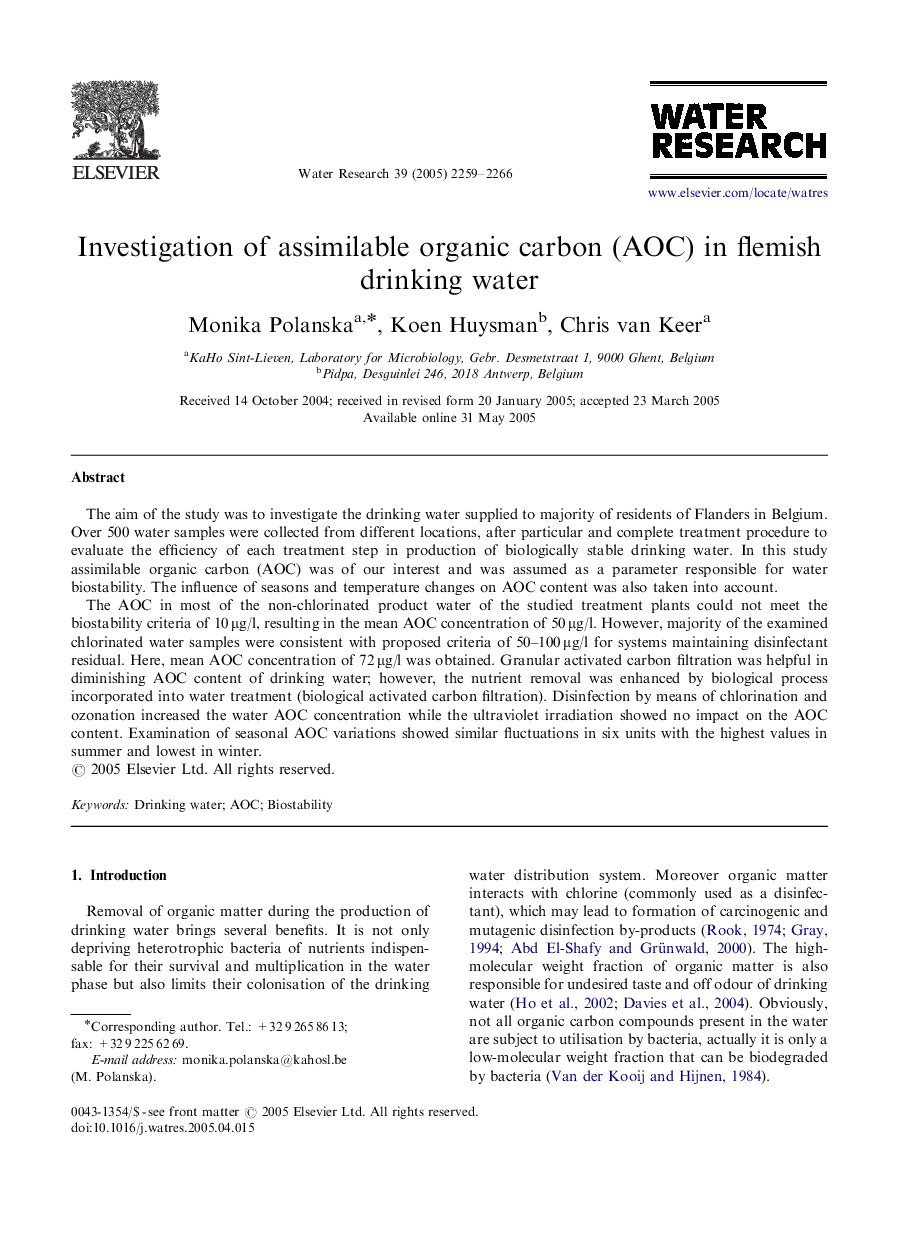| Article ID | Journal | Published Year | Pages | File Type |
|---|---|---|---|---|
| 4487037 | Water Research | 2005 | 8 Pages |
The aim of the study was to investigate the drinking water supplied to majority of residents of Flanders in Belgium. Over 500 water samples were collected from different locations, after particular and complete treatment procedure to evaluate the efficiency of each treatment step in production of biologically stable drinking water. In this study assimilable organic carbon (AOC) was of our interest and was assumed as a parameter responsible for water biostability. The influence of seasons and temperature changes on AOC content was also taken into account.The AOC in most of the non-chlorinated product water of the studied treatment plants could not meet the biostability criteria of 10 μg/l, resulting in the mean AOC concentration of 50 μg/l. However, majority of the examined chlorinated water samples were consistent with proposed criteria of 50–100 μg/l for systems maintaining disinfectant residual. Here, mean AOC concentration of 72 μg/l was obtained. Granular activated carbon filtration was helpful in diminishing AOC content of drinking water; however, the nutrient removal was enhanced by biological process incorporated into water treatment (biological activated carbon filtration). Disinfection by means of chlorination and ozonation increased the water AOC concentration while the ultraviolet irradiation showed no impact on the AOC content. Examination of seasonal AOC variations showed similar fluctuations in six units with the highest values in summer and lowest in winter.
